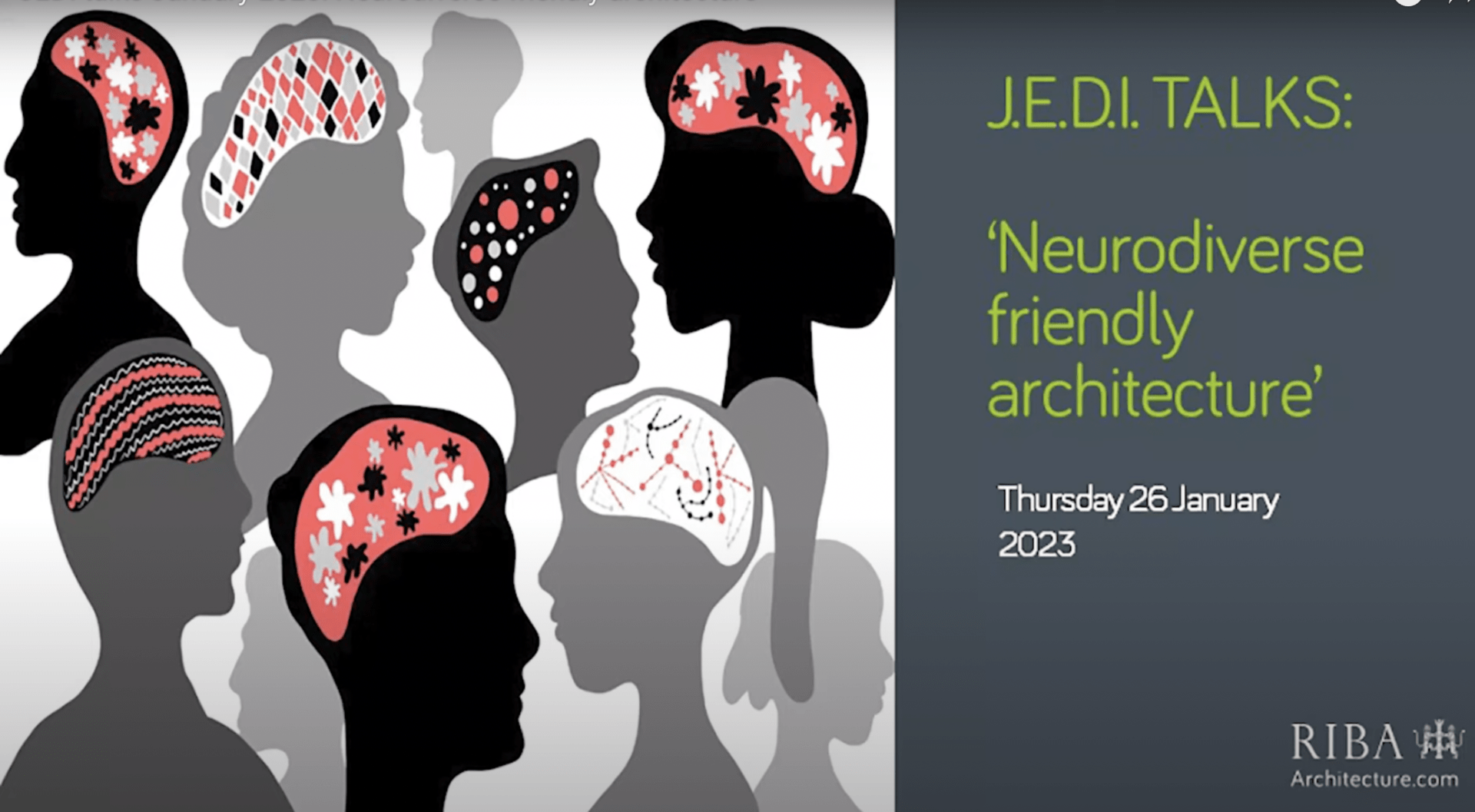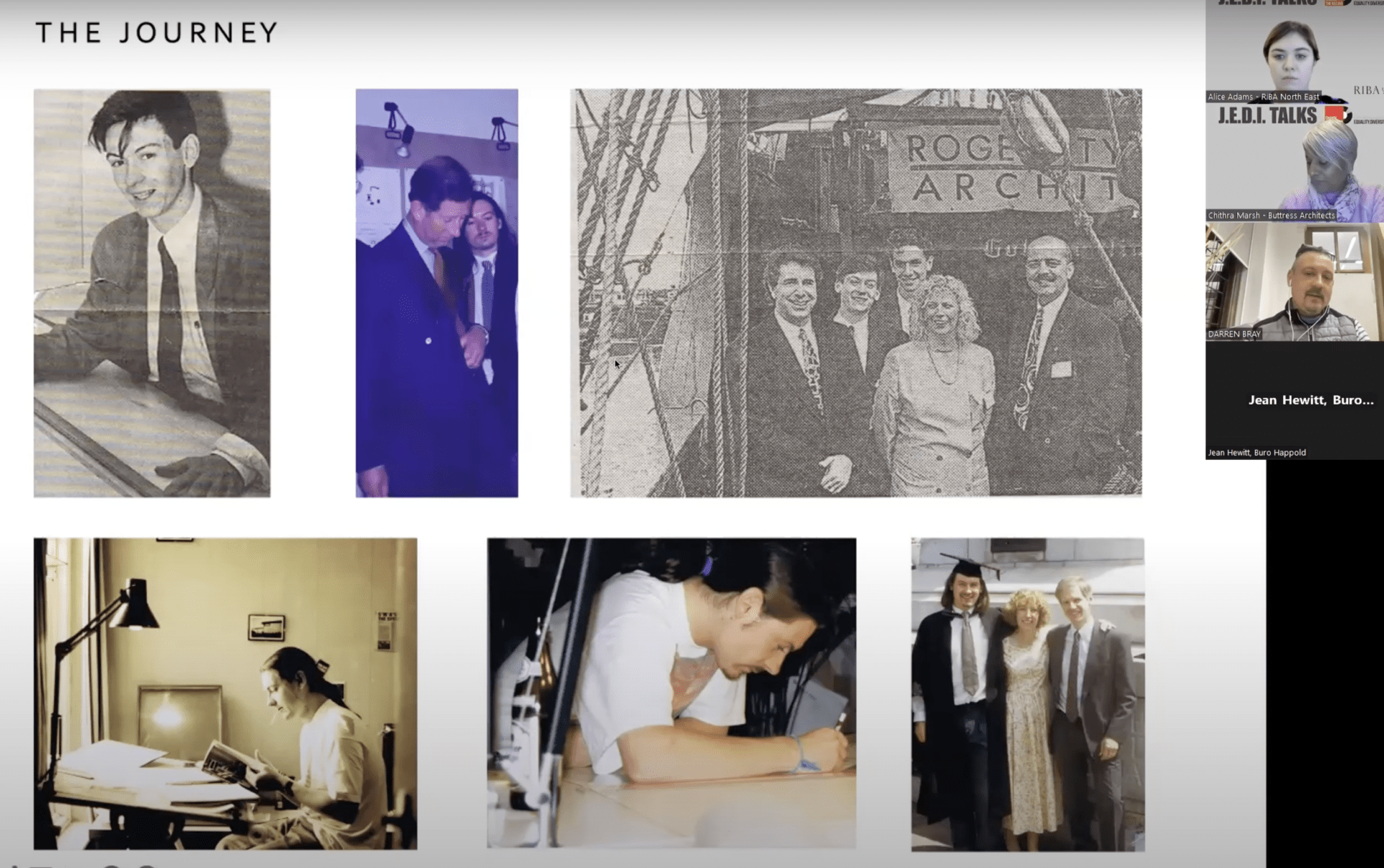Earlier this year I was invited to take part in the J.E.D.I (Just Equality Diversity Inclusion) talk, hosted by RIBA NE as part of their ‘Change the Record’ Campaign Group. Chaired by Chithra Marsh, Associate Director at Buttress Architects, with other speakers along with myself on the panel including Nick Simpson from Leap Architects and Jean Hewitt, Inclusive Design, Associate at Buro Happold.
The discussion looked at how neurodiversity has affected us all, how it has impacted our personal and work lives, the way we approach work and how we can design with equality and inclusion in mind. Each speaker shared their own, hugely personal experience of this unseen disability, I urge you all to have a listen to the fascinating stories.
Very simply put we are all neurodiversity in different ways, there is no norm for everyone and how it can effect us. How we communicate, how we think, how we learn, these are all unique to the individual, there is no right and wrong, we just experience the world differently but there are ways we can make things easier.
I shared my own living experience; growing up with undiagnosed dyslexia I found the academic system incredibly difficult. After leaving school without achieving any GCSE’s I was fortunate to enter a youth training scheme where I was so lucky to find a lifelong mentor, and friend, in Roger Tyrell.
My route to architecture has not been a typical one. I gained vocational qualifications and entered university at 21, something I never thought would be a possibility for me. Interestingly it was only after I had submitted my first essay that my tutor noticed I might be dyslexic, something I had never heard of let alone thought I might be affected by. Architecture itself I find suits me, and how my brain works. I think differently and work at a different pace which suits how I design – I now see my dyslexia as a sort of superpower, which I have talked about before.
Jean Hewitt shared her recent work on Inclusive Design, PAS 6463, Publicly Available Specification. This work is the first step to becoming a formal standard, highlighting changes that should be embraced as the norm to help those with neurodiversity needs.
Obviously, it is difficult to have a design standard to fit all, as everyone is impacted differently by the environment around them. The study does important work to highlight areas designers might overlook, to help build better surroundings for everyone and it is well worth having a closer look at the full report. There were three key pull outs from PAS 6463; firstly, each environment should have clarity so people can find their way and not get lost. Secondly, each environment should give the user choice and control. Finally, that, if possible, there should be a calm place to escape to, a place of calm if things get overwhelming so individuals can reset and rejoin when ready.
My overall impression from the talk was of positivity, that everyone affected by some form of neurodiversity would not change their diagnosis. I hope everyone can learn to understands all neurodiversity’s should not be seen as a barrier to life, personal or in work. We are all different, but that ‘difference’ is often what makes us uniquely us.


